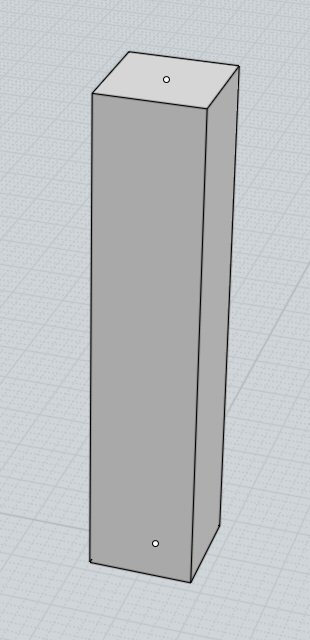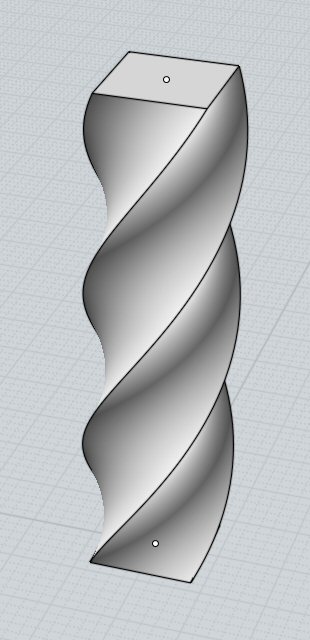 |
| Flow |
Deforms objects by mapping them from one backbone curve or surface to another.
Flow is a versatile deformation tool which can help with the construction of curved
pattern details, by taking objects that were initially modeled as flat 2D patterns and warping
them into a curved shape. Being able to initially construct a rigid 2D shape made up of straight
pieces can often times be an easier approach than trying to model the final curved shape directly
in place.
Flow works with 2 different modes, curve-to-curve mode or surface-to-surface mode.
The mode is determined by whether you select a curve or a surface at the prompt for picking
the base object.
For curve-to-curve mode, start by selecting the objects you want to deform, then run the
Transform > Deform > Flow command, then click on the base curve followed by a click
on the target curve. The ends closest to where you click on the base and target curves will
be matched together to be used as the starting points for the deformation. Usually the base
curve is a line running down the center of the straight shape and the target curve is a
bendy curve.
By default curve-to-curve Flow will match distance traveled along the base curve to
the same distance traveled along the target curve. If you enable the "Stretch" option this
will change to instead map by percentage along each curve, stretching or squishing the result
if one curve is longer or shorter than the other.
Some examples of curve-to-curve flow:
Mapping some text onto a curve, here the base curve is the line under the text,
the bendy curve is the target curve:


You can use curve-to-curve flow to bend an object into a circular shape by using a straight
line through the object as the base curve, and a circular arc as the target curve:
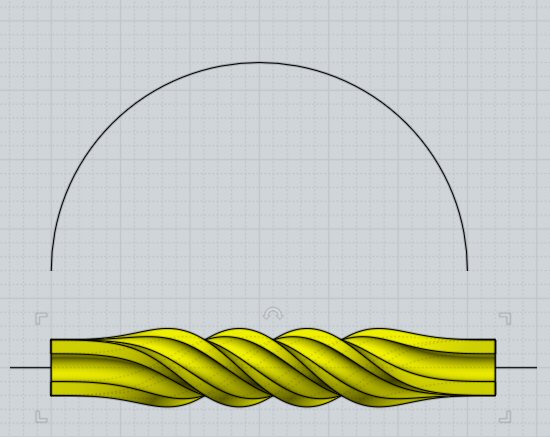
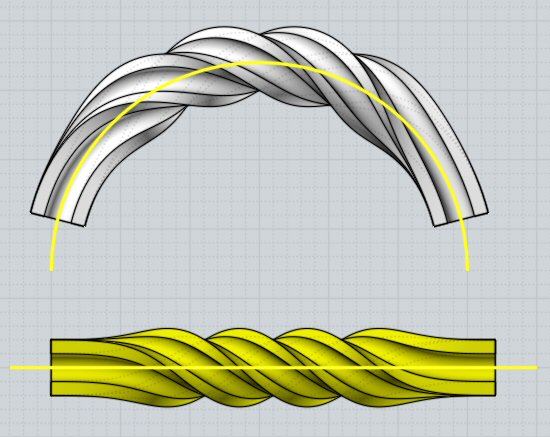
Deforming a pattern created with Transform > Array tools onto a curved shape:
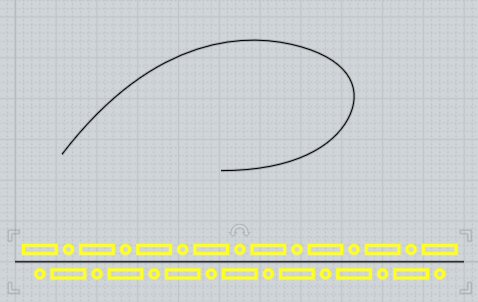

Deforming an ellipsoid into a hook shape:
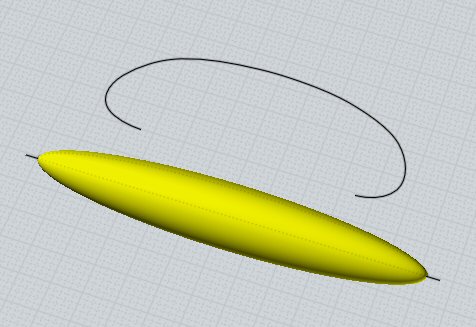
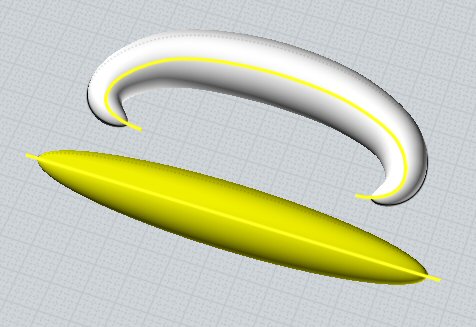
A helix can be deformed to follow a curve to make a path for a phone cord sweep:


Sometimes it can be useful to position objects vertically above the curves, for example here
text positioned vertically above the base line is wrapped into a cylinder shape by using a circle
as the target curve:


For Flow surface-to-surface mode, start by selecting the objects you want to deform, then run the
Transform > Deform > Flow command, then click on the base surface followed by a click on
the target surface. Usually the base surface is a flat plane running underneath or through the
middle of the objects and the target surface is a curved surface.
Surface-to-surface Flow has 2 different ways of working, regular mode and "Projective" mode. Regular
mode works by applying objects across the entire target surface similar to texture mapping. Projective
mode works by projecting onto a small region of the target object, more like applying a decal.
Projective mode is activated by enabling the "Projective" checkbox that shows up in the stage where you
pick the target surface. For regular mode the particular location of the base plane in relation to the
target surface does not matter (but the click locations on each do matter, see below), while for
Projective mode the objects to deform and base plane should be positioned above the area that
receives the projection.
An example of regular surface-to-surface mode, the base plane matches to the entire width and height
of the target surface:
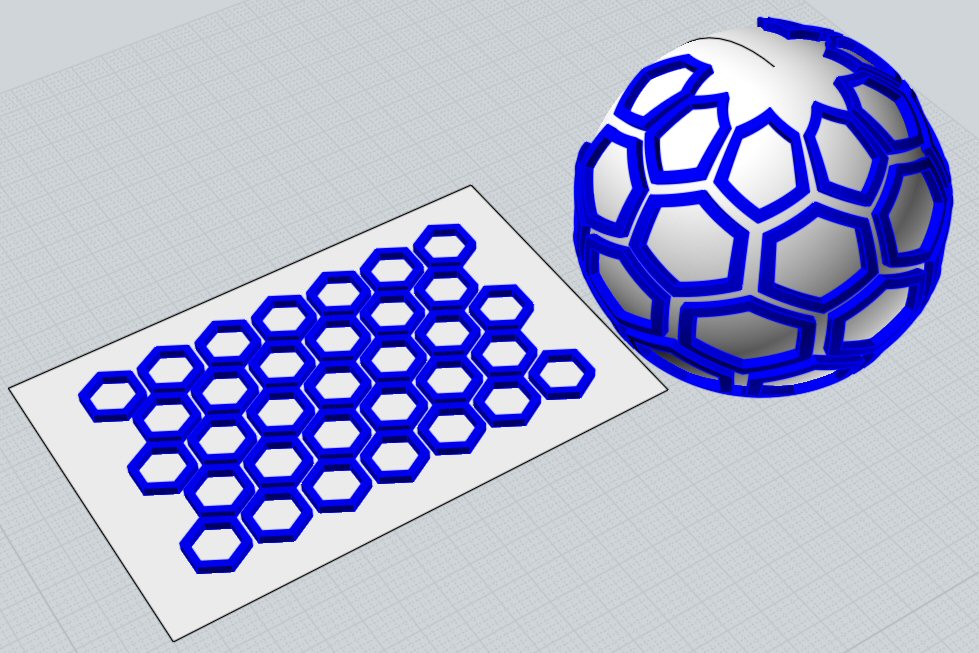
An example of projective mode, the base plane projects down along the plane's surface normal direction
onto a local area of the target object. The position and orientation of the base plane above the target
object is significant in this mode:
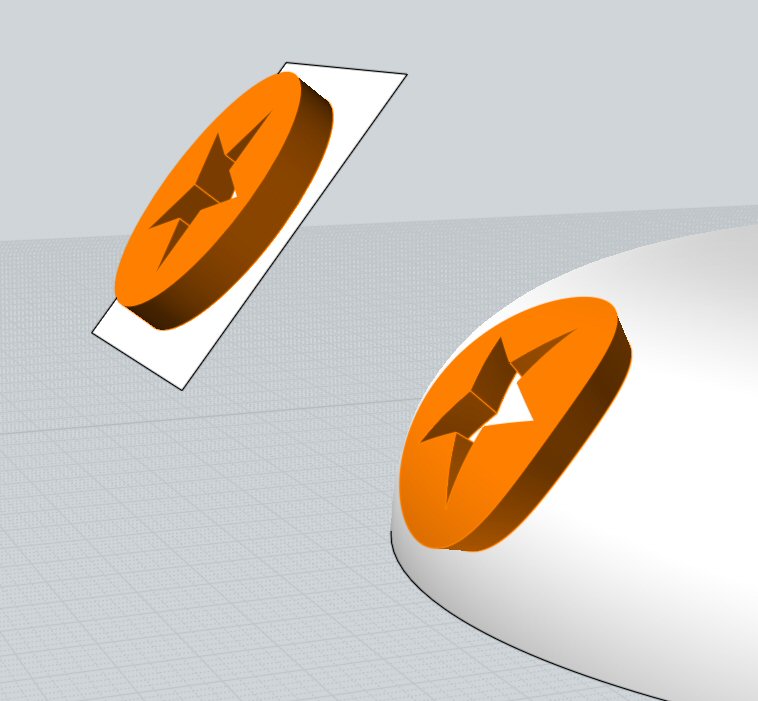
For non projective mode, the locations that you click on both the base surface and
target surface are significant and control how the horizontal and vertical directions of each
surface will be matched to one another. You need to click nearby an edge of each surface, towards the
start or end of the edge. The pattern will be rotated and reflected as needed to make the picked
locations match with one another. If you do not click each surface with care it is easy for unwanted
rotations to happen. Following is a visual example for where to pick.
In this example there is a pattern on a base plane that we want to put on the cylinder:

Note that before doing the Flow only the objects to be deformed should be selected, the base plane
running under them should not be selected yet. You will select the base plane only after starting the
Flow command. At the prompt for selecting the base surface, click on the base plane nearby one of these
8 locations marked here with a red dot:

Those 8 locations are spots along an edge towards the start or end of the edge. You do not want
to click exactly on the corner of the base surface because you want to target an edge and
clicking directly on the corner creates ambiguity between the 2 different edges that are connected
to that corner. You can use any one of these 8 click locations, but since in the next step
you will be clicking on the equivalent spot on the target surface it can be good to use a location
that is easily reachable on the target surface.
For this case, let's say you picked this location on the base surface:

Picking in that location means we are going to be controlling the upper horizontal direction of
the pattern. We want that direction to map to the upper circumference of the cylinder surface, so
at the next prompt to select the target surface we want to click on the cylinder surface in this
spot here, near the top edge but a little ways in from the corner:

That will then produce a result like this:

For projective mode the target object can be made up of multiple joined surfaces if they are
all smooth to one another.
In projective mode, rays are fired out from the base plane along the base plane's surface normals
and intersected with the target object. The target object should be large enough so that these rays
actually hit it and do not just fire out into empty space.
The "Rigid" option is available for all Flow modes. When enabled the "Rigid" option causes objects
to be only moved and rotated into a new position (using a "Rigid body transformation") rather than
the object being deformed. This will keep a sphere for example to still be a sphere in the result
without it being bent or warped into a different shape. This works by deforming only a single point
of at the center of the object's bounding box and then moving and rotating the object accordingly.
Usually this is used to apply a pattern of small objects across the target surface.
If you plan to do a Boolean union or difference with the result of the Flow, it is usually a good
idea to position the objects so that they are pushing through the base plane a little bit rather than
sitting exactly flush on top of the base plane. That will then make the deformed results similarly push
through the target surface rather than having pieces with overlapping surface areas that just
barely touch each other. It tends to be much more difficult for the Boolean mechanisms to make sense of
skimming overlapping surfaces.




























































